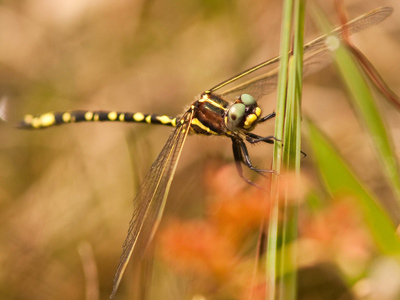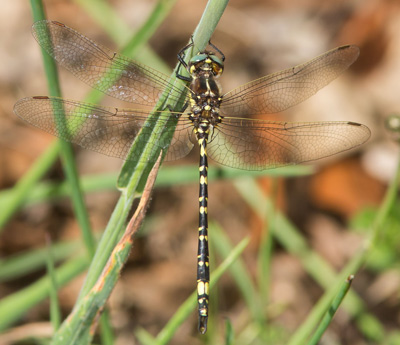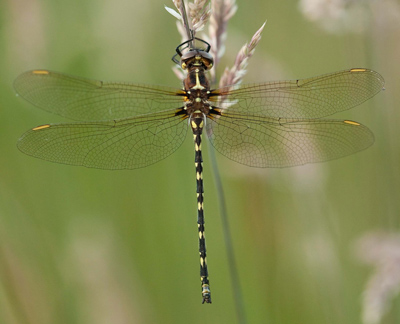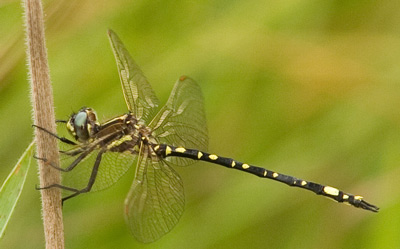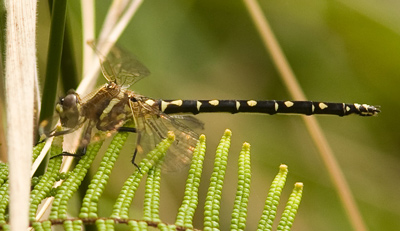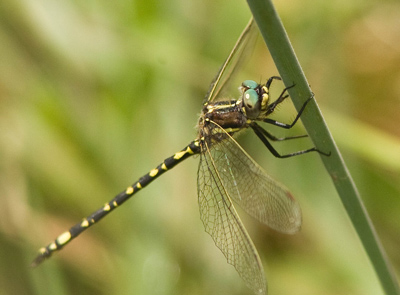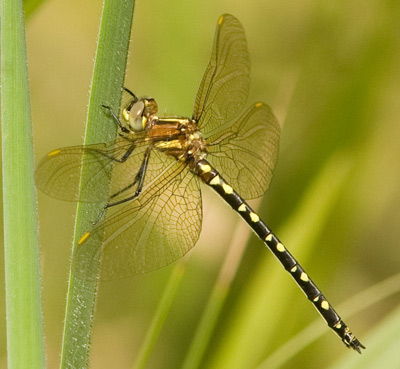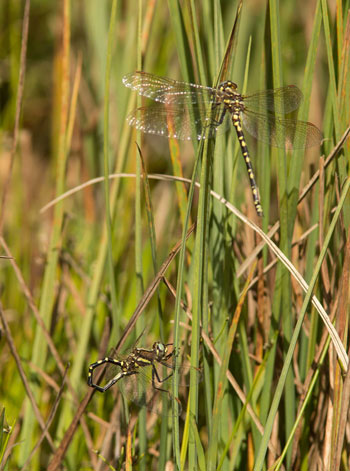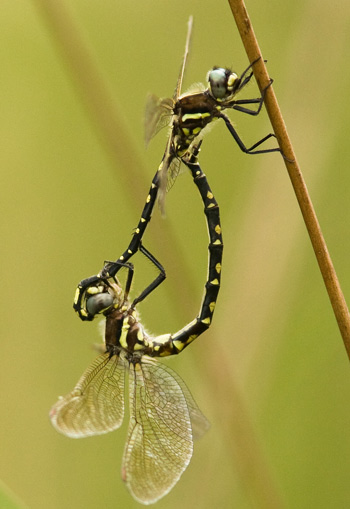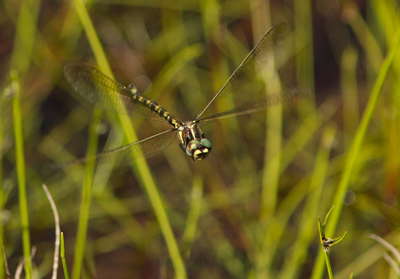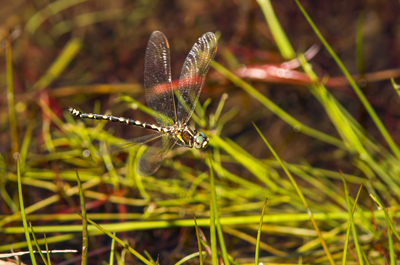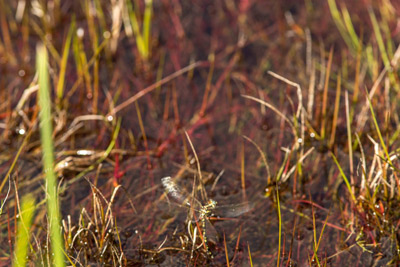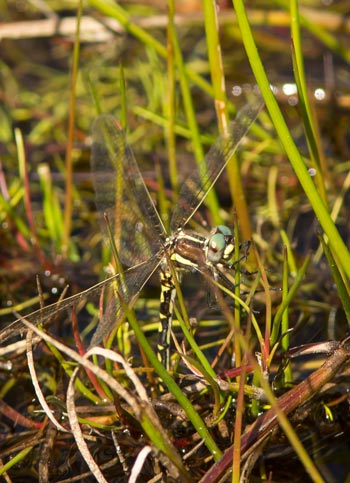Synthemis eustalacta (Burmeister, 1839)
SWAMP TIGERTAIL
Family Synthemistidae
The Swamp Tigertail is quite common on the tablelands of the Mid-North Coast of NSW. I often see it perched on long grass in cleared areas. They will keep trying to land on different grass stems until they find one which will hold their weight.
The Swamp Tigertail Synthemis eustalacta is quite easy to distinguish from the local members of the similar looking genus Eusynthemis as the yellow stripes on the synthorax are distinctly edged in black. The pattern of spots on the abdomen is different as well.
Notice on the side view of the female Swamp Tigertail that her ovipositor is quite long and is in fact longer than segment 9 whereas the ovipositor in the female of the genus Synthemis is much less developed.
Twice now I have observed a pair of Swamp Tigertails mating multiple times during an egg laying session. The male stays close by the female while she lays eggs. After she perches to have a rest, he replenishes his sperm supply in his secondary genitalia, then grabs her and mates in mid-air as they fly off. They stay mating when they land on low vegetation and they fly and land several times in one
mating session.
The female sometimes lays eggs by dipping her abdomen in shallow water while hovering or by landing on a stem low enough to place the end of her abdomen in the water in order to lay eggs.
